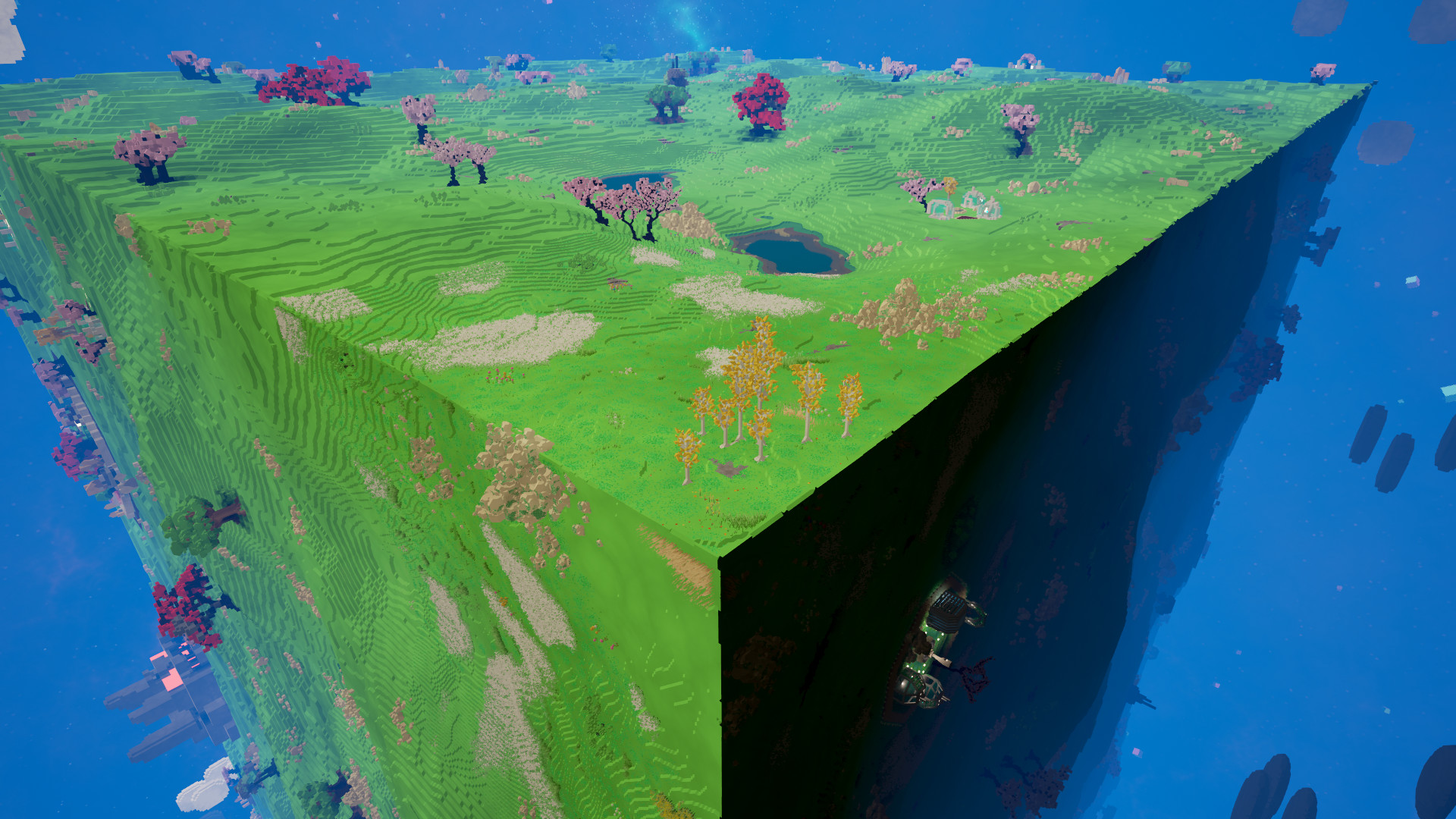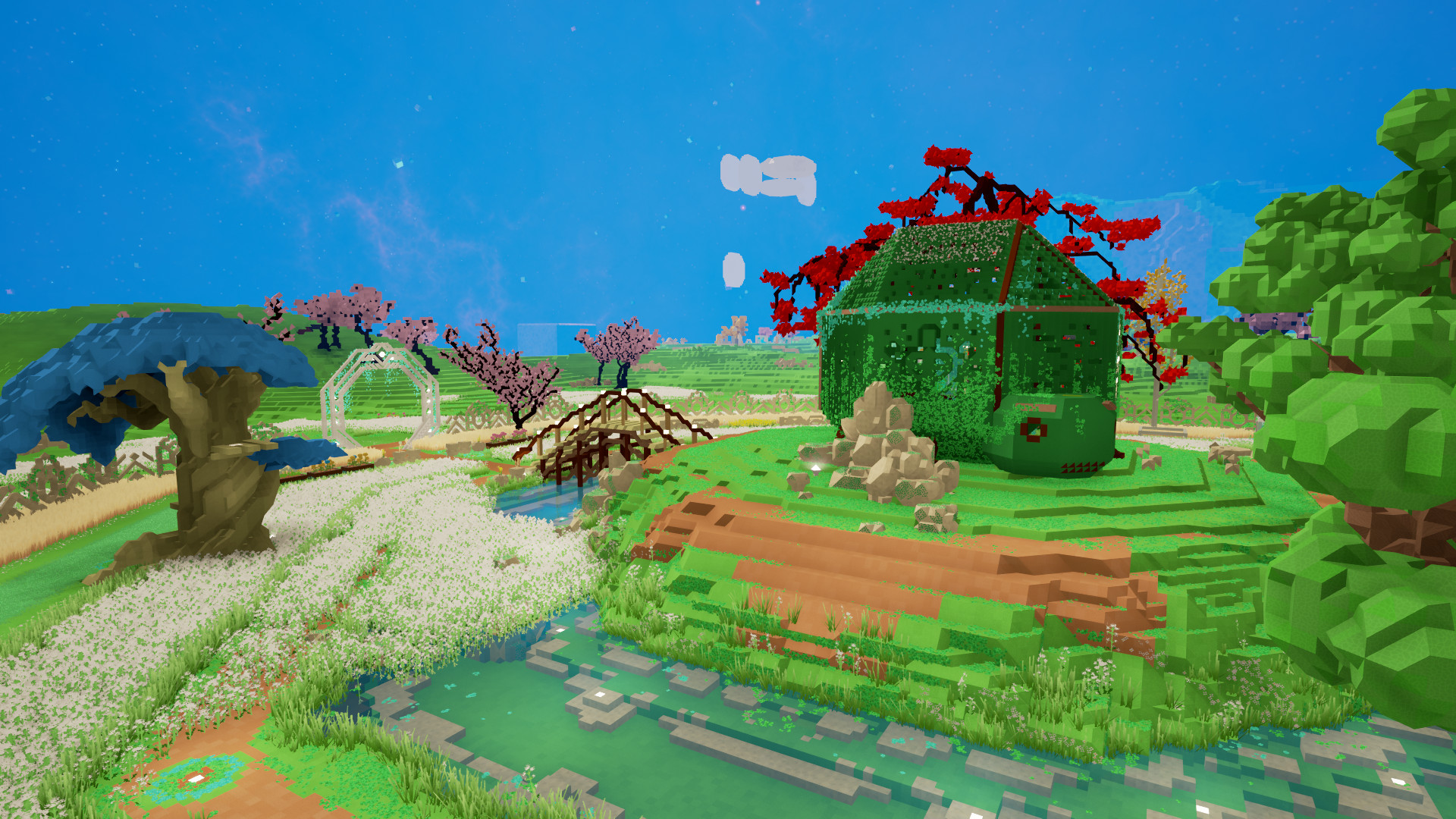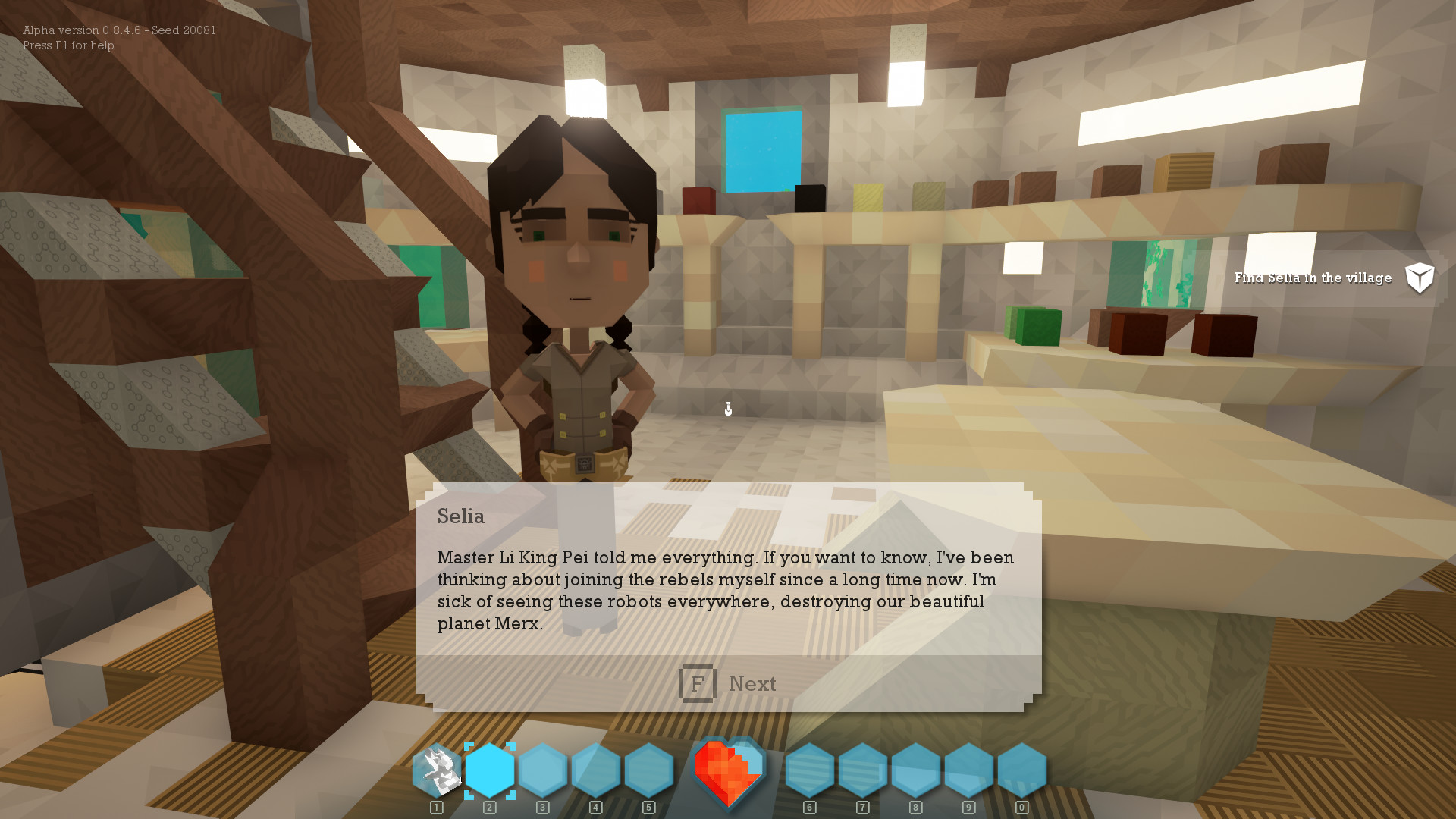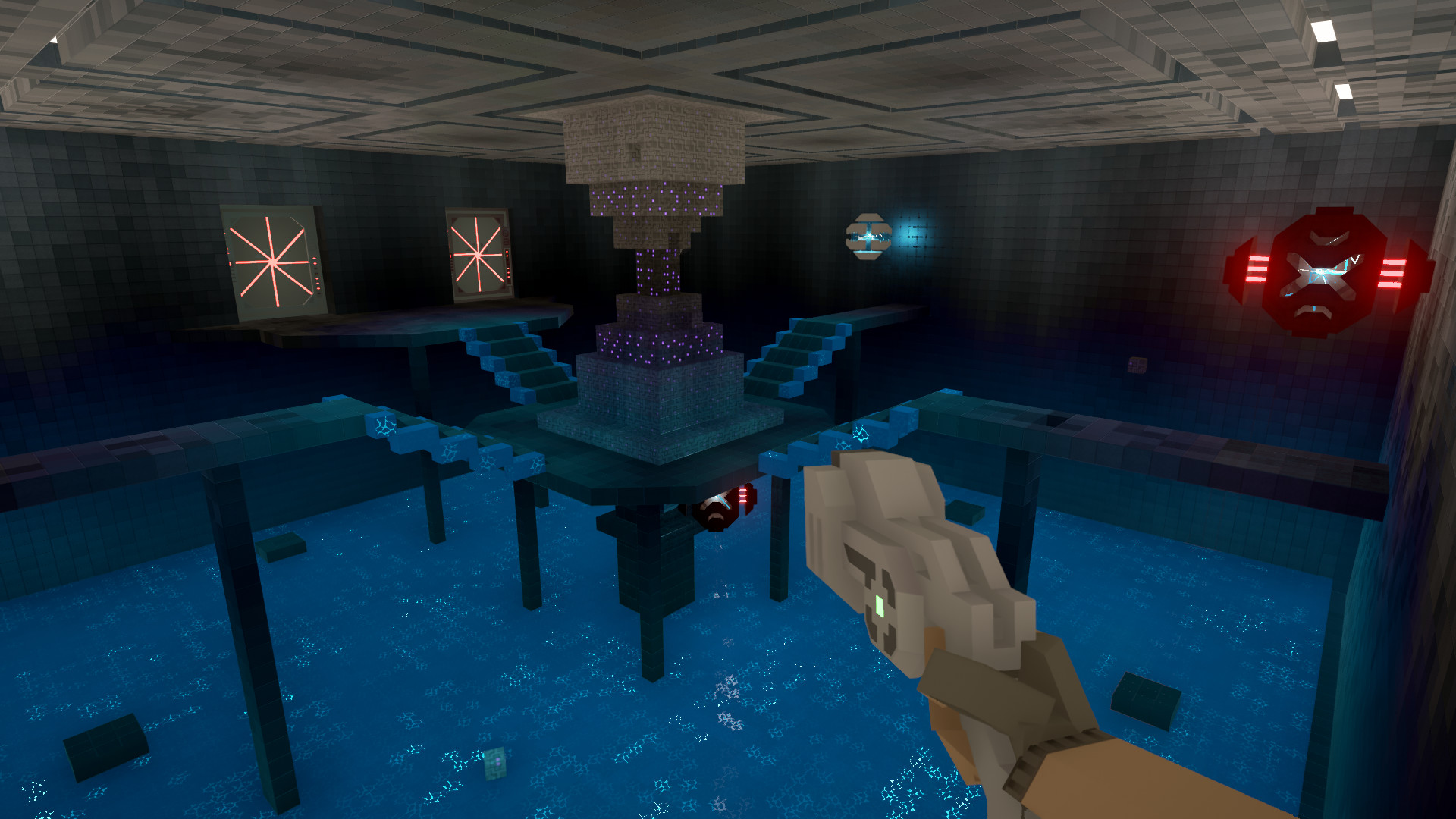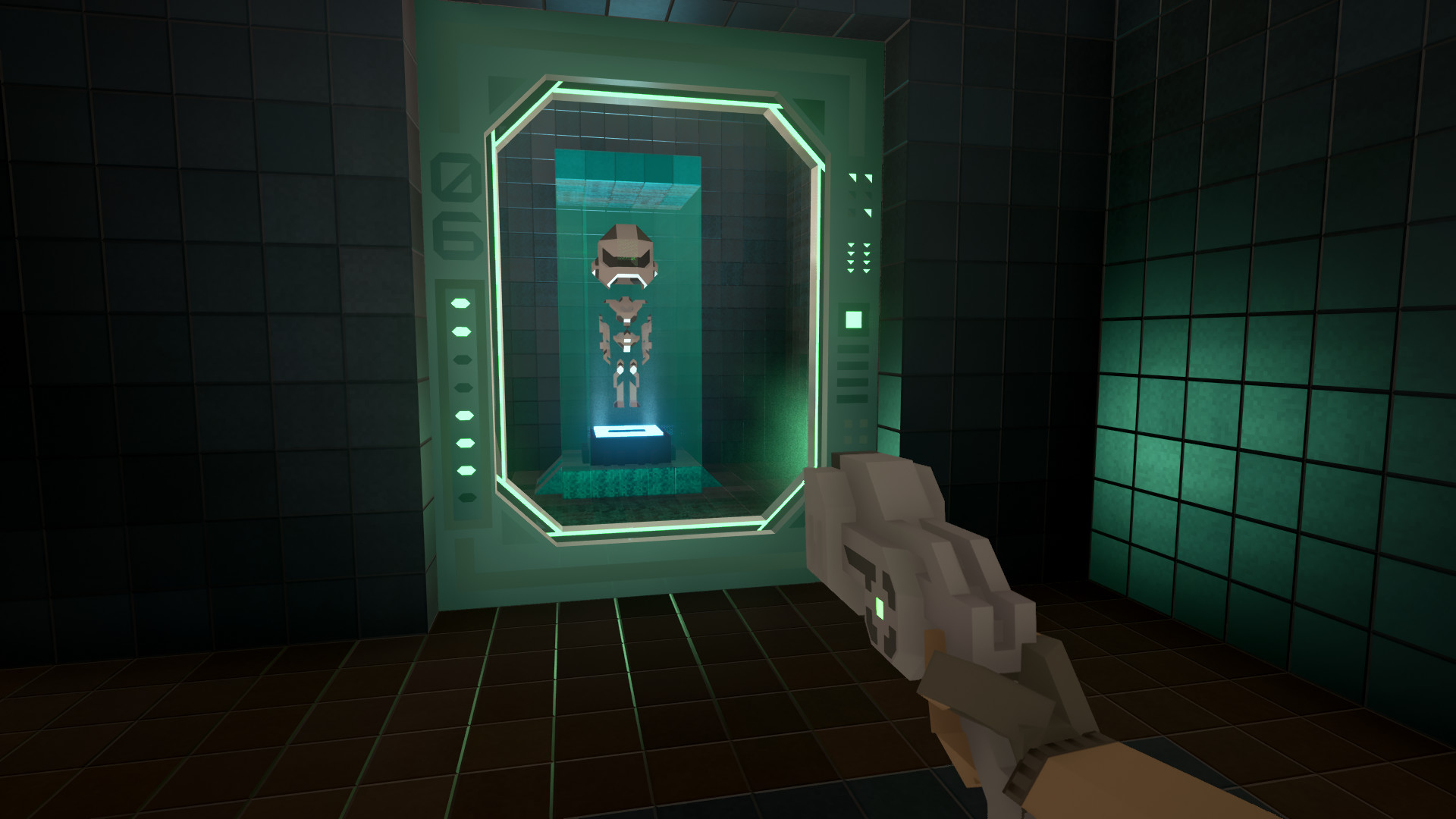The playground
 Each planet has its specific set of resources. By exploring them, you will unlock access to new technologies. Merx, the small green planet, is the first planet of the game.
Each planet has its specific set of resources. By exploring them, you will unlock access to new technologies. Merx, the small green planet, is the first planet of the game.Story and important characters

Stellar Overload is a scenarized adventure game where you’ll go on a quest to free the planet Merx from the yoke of Imperium Machina.

Some characters, directly related to the main quest, will give you valuable information to help you progress.
Features related to the story and progression:
- Possibility to customize your character
- Dialogues related (or not) to the quests
- Monitor your quest objectives in real-time
- A progression curve related to the quests but also to exploration
- Planets (and enemies) of different levels
Exploration and craft

While progressing through the main quest, exploring the world and the dungeons, you’ll unlock more and more recipes. These recipes will help you get stronger and go further into the adventure.
You will need raw resources to create various objects (tools, weapons, armors...). You can find these resources by different ways: pick them up directly on the planets, find them in chests or get them as quest rewards.
Exploration and craft features:
- A global map of the planets
- A minimap
- A jetpack to travel through the caves more easily
- Possibility to create a vehicle to move faster
- Different craft stations
- Glowblocks will help you enlighten the caves
- Different levels of gauntlet in order to pick up the various blocks of the game
- Teleportation (within a dungeon or between planets)
- Semi procedural dungeons
- Evolving music and soundscape based on the day-night cycle
Combat

To defend yourself against your enemies, you will rely on the creative talents of some important characters in the story, and learn how to create weapons and armors.

The Block-Thrower is an exotic weapon, it can load any of the game’s blocks and throw them at enemies. Depending on the nature of the blocks, damage and effects will be different. Damage aside, if you throw a Glowblock against a cave wall, it will enlighten the cave.
Features related to fighting in this early access version:
- 5 different weapons: the pistol, the rifle, the Block-Thrower, the sonic carbine and the grenades
- 1 armor to greatly reduce damage
- 6 different enemies (Arkuloids, Cognitrons, Legionnaire robots, Plasma turrets, Tesla pylons)
- A boss in the fortress
Construction

Since Stellar Overload is a game made of blocks, the construction (and harvest) is an important aspect of the game.
You can build all types of structures but also vehicles, which will facilitate the exploration of the planets.
A creative mode is available, allowing you to unleash your imagination without worrying about the scenario.
Construction features:
- 6 different shapes of blocks
- Easily place and destroy walls (straight or sloping)
- A tool to "paint" the targeted area with a certain material (adjustable size)
- A tool to save a construction and place it elsewhere ("copy/paste")
- Possibility to define an alignment grid (to facilitate the placement of shapes)
- Undo / Redo : very useful in creative mode!
- More than 200 different materials
A few numbers in blocks
Merx, the first planet of the game, which is also the smallest, is 1200 blocks long per side, with an area of 1.4 million blocks for each face.
It has a total area of 540,000 m² and is composed of about 2 billion blocks!
For the planet Skahar, the largest, which is 8000 blocks long per side, each face has an area of 64 million blocks. The whole planet has a total of about 500 billion blocks!
Hi everybody! Last time, we saw how I used a leitmotiv to characterize our character's journey, today I will tell you a little more about the music of Merx.
The leitmotiv of Merx:
Again? Yes, indeed, I used a leitmotiv also for the planets sometimes. But here it is even more simple and basic than for our character, it is not really a melody, but just 3 successive notes, making it much more malleable, adaptable to the various situations encountered on the planet.

This small figure can be heard for the first time in the village (at 0.15 precisely):
https://www.youtube.com/watch?v=PZK4UqnVqPQ&feature=youtu.be&t=15s
Then we will hear it everywhere on the planet, for example here at Li King Pei’s house, very quickly at the beginning of the theme, and then played by a Japanese flute (at 0.29):
https://www.youtube.com/watch?v=kDwBp3N6SEc&feature=youtu.be&t=29s
Merx is the starting planet. With Reymantha, we call it la-la land. Everything is beautiful, calm, and very (nearly too much) naive. I obviously wanted people to feel it, almost humorously, with very soft, relaxing, and cute music at the same time. That’s why it’s mostly played by a flute, or a piccolo, the most aerial and light instruments, as here in the grasslands of Merx (at 0.34 precisely):
https://www.youtube.com/watch?v=D4lwbLNlZac&feature=youtu.be&t=34s
A small anecdote, this theme, by its lightness, its naiveté, and its aerial side supposed to represent the song of the birds, is a small reference to a studio Ghibli film that I like very much: The Tale of the Princess Kaguya, more precisely the theme representing the joie de vivre of the main character at the beginning of the film (from the beginning of the music):
https://www.youtube.com/watch?v=ZNfbVEXItRk&feature=youtu.be
By creating this small 3-notes pattern, which will be modified in a large number of musics, I thus introduce a musical peculiarity to Merx, which, if it can’t be felt from the beginning (because there are no points of comparison in the adventure), will take its full meaning medium-term and long-term, without (at least I hope) becoming a too annoying melody.
Instrumentation:
This notion of leitmotiv is not only felt in this small figure but also in the instruments chosen to represent this planet. I choose a set of precise instruments for each planet, and even if I authorize myself a few exceptions, I try to remain faithful to this, for more coherence.
The basic instruments I chose for Merx are: flute, piccolo, folk guitar, harp, violins, soft synths. An example with a good part of these instruments in this excerpt (starting from 4.20):
https://www.youtube.com/watch?v=D4lwbLNlZac&feature=youtu.be&t=4m20s
Flutes, harps, or violins are often used in video games, the folk guitar is much less. It's a touch that I liked, because with percussion and synths, it allowed me to have a slightly "weird bossa nova" style. Here I am inspired by the soft guitar musics of Ian Snyder in The Floor is Jelly:
https://www.youtube.com/watch?v=DWt-t0YwXmY&feature=youtu.be
But the whole principle of what I try to do on the planets is in the hourly evolution of the music. The basic idea, as most often, comes from a problem related to gameplay: the planets are cubic, so one can almost instantaneously go from day to night. This is the basis of my reflection: how can we go from day to night, or from morning to dusk, without shocking the ear? Elements of response are in the video that follows:
https://www.youtube.com/watch?v=QpSTxgIgmuY
What is heard in this video is that the orchestration and even the melodies evolve over time, becoming more and more electronic and abstract when the night comes, and conversely more and more organic and real by day. The process consists in the creation of several musics, of strictly equal lengths, and similar harmonies.
The hourly cycle of the game will then pass these musics from one state to another, in a fluid way, and it will function if the player stays on the same side of the planet or if he decides to change abruptly. In the next example, I will make the music pass from day to night and then to dusk, which is normally totally illogical, but entirely possible with the structure of our game:
https://soundcloud.com/cubicaldrift/day-to-night-to-dusk
It is almost the same principle that is applied to the environmental sounds, and that is more easily understood via the sound interface that we use in our game (Wwise):

Here we see that following the advance of the time of day, different atmospheres can blend into each other.
There you have the basic things I used to create the music of Merx. There are still a lot of things to talk about, especially in caves or underwater, but I cannot explain everything. In the next episode, we will concentrate on the small details, anecdotes, allusions or references, hidden here and there in the music of Stellar Overload.
I hope you enjoyed this episode, see you soon!
Minimum Setup
- OS: Ubuntu 15.10 or above (64-bit Operating System Required)
- Processor: Quadcore Intel Core i5 or AMD equivalentMemory: 8 GB RAM
- Memory: 8 GB RAM
- Graphics: AMD Radeon HD 7870 (2GB) or NVIDIA GeForce GTX 660 (2GB)Network: Broadband Internet connection
- Storage: 5 GB available space
Recommended Setup
- OS: Ubuntu 15.10 or above (64-bit Operating System Required)
- Processor: Quadcore Intel Core i7 or AMD equivalentMemory: 16 GB RAM
- Graphics: AMD Radeon RX 480 or NVIDIA GTX 970Network: Broadband Internet connection
- Storage: 5 GB available space
[ 6444 ]
[ 3706 ]
[ 5362 ]

